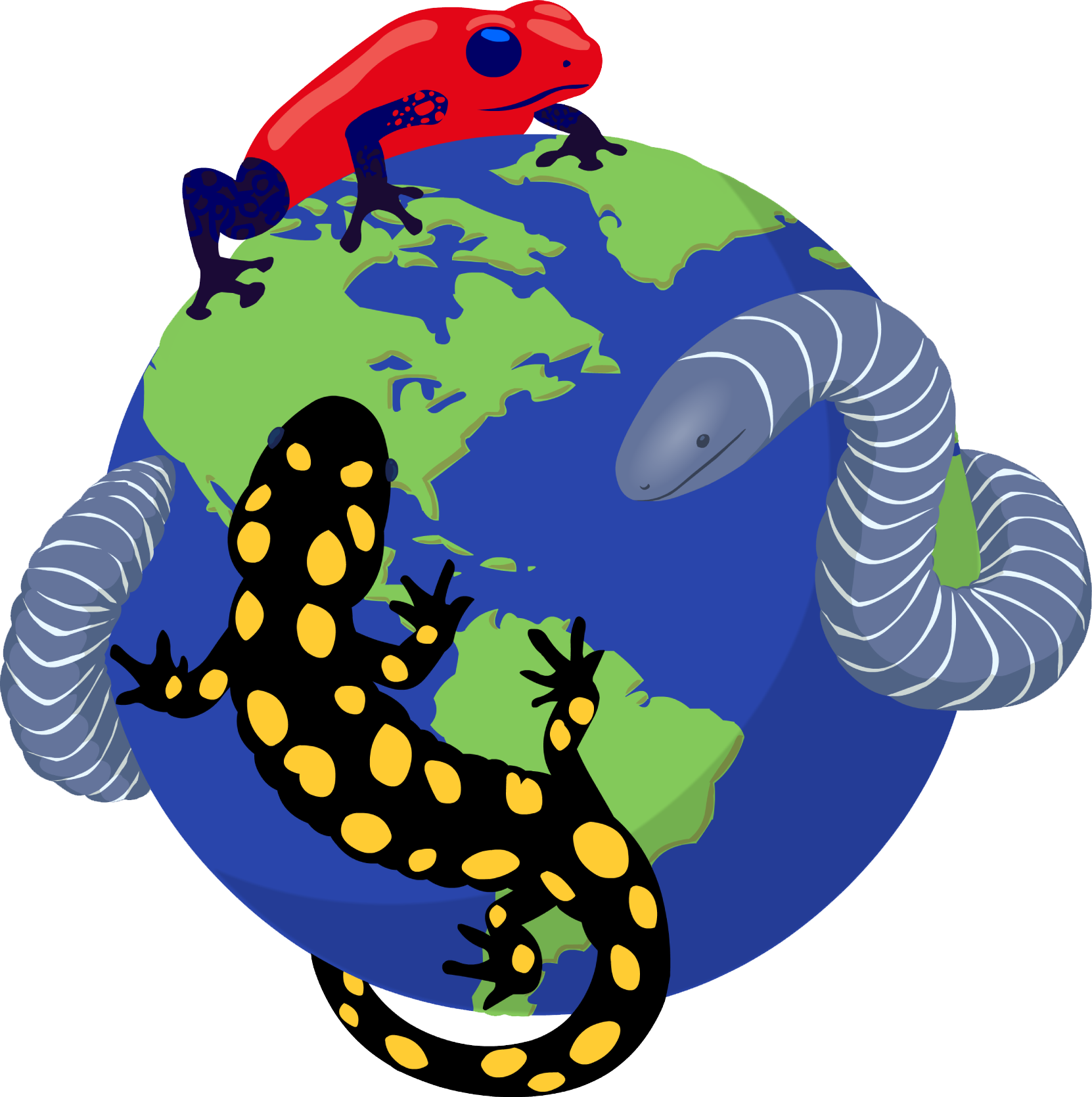|
Ichthyophis khumhzi Kamei, Wilkinson, Gower & Biju, 2009
Khumhzi striped Ichthyophis | family: Ichthyophiidae genus: Ichthyophis |
| Species Description: Kamei RG, Wilkinson M, Gower DJ, Biju SD 2009 Three new species of striped Ichthyophis (Amphibia: Gymnophiona: Ichthyophiidae) from the northeast Indian states of Manipur and Nagaland. Zootaxa 2267:26-42. | |
|
Etymology: Ichthyophis khumhzi is named after Khumhzi village, where the holotype was found (Kamei et al. 2009). |
|
|
|
|
Description Diagnostic Characters: Ichthyophis khumhzi can be distinguished by the following combination of characters: having narrow, irregular lateral yellow stripes running from close to the corner of the mouth to the level of the vent but not contacting the disc, and barely to not visible on ventral side of collars; narrowness of stripe indicated by midbody width/stripe width at midbody ratio > 6; adult total length greater than 400 mm, body length/width ratio between 24 and 26; > 300 annular grooves, which are darker in color than the adjacent skin; V-shaped, short head, with head V-shaped, short, with total length/head length ratio >25; tentacular apertures located more than twice as far from nares than from eyes; first collar noticeably shorter than second collar; scales found as far anterior as the collars, and four or five rows posteriorly on dorsum; similar numbers of splenial and dentary teeth (Kamei et al. 2009). Similar species: I. khumhzi can be distinguished from other known south Asian striped Ichthyophis (I. beddomei, I. garoensis, I. glutinosus, I. kodaguensis, I. pseudangularis, I. tricolor), with the exception of I. longicephalus, by having tentacular apertures >2x as far from the nares as the eyes (in the other species listed above, tentacular apertures are less than 2x as far from the nares as the eyes). I. khumhzi can be distinguished from I. longicephalus by having a short, V-shaped head, with a total length/head length ratio >25 (vs. a longer head, not V-shaped, with a total length/head length ratio less than 18 for I. longicephalus), having more scale rows (vs. fewer scale rows for I. longicephalus), equal collar size (vs. subequal in I. longicephalus), and a stripe that does not extend onto the tail (vs. stripe extending onto the tail for I. longicephalus) (Kamei et al. 2009). I. khumhzi can be distinguished from all southeast Asian striped Ichthyophis species (I. attricolaris, I. biangularis, I. bannanicus, I. bernisi, I. elongatus, I. humphreyi, I. hypocyaneus, I. kohtaoensis, I. paucisulcus, I. supachaii) in having approximately equal numbers of splenial and dentary teeth (vs. considerably fewer splenial teeth than dentary teeth in the other species) (Kamei et al. 2009). Coloration in life: dark brown grayish dorsum with a reddish gray venter, and narrow irregular dull-yellow lateral stripes (Kamei et al. 2009). Distribution and Habitat Country distribution from AmphibiaWeb's database: India
Life History, Abundance, Activity, and Special Behaviors Trends and Threats Possible reasons for amphibian decline General habitat alteration and loss
References
Kamei, R.G., Wilkinson, M., Gower, D.J. and Biju, S.D. (2009). ''Three new species of striped Ichthyophis (Amphibia: Gymnophiona: Ichthyophiidae) from the northeast Indian states of Manipur and Nagaland.'' Zootaxa, 2267, 26-42. Originally submitted by: Stephanie Ung and Kellie Whittaker (first posted 2009-11-12) Description by: Hong Nguyen (updated 2025-01-13)
Edited by: Kellie Whittaker (2025-01-13) Species Account Citation: AmphibiaWeb 2025 Ichthyophis khumhzi: Khumhzi striped Ichthyophis <https://amphibiaweb.org/species/7383> University of California, Berkeley, CA, USA. Accessed Jun 1, 2025.
Feedback or comments about this page.
Citation: AmphibiaWeb. 2025. <https://amphibiaweb.org> University of California, Berkeley, CA, USA. Accessed 1 Jun 2025. AmphibiaWeb's policy on data use. |



 Map of Life
Map of Life